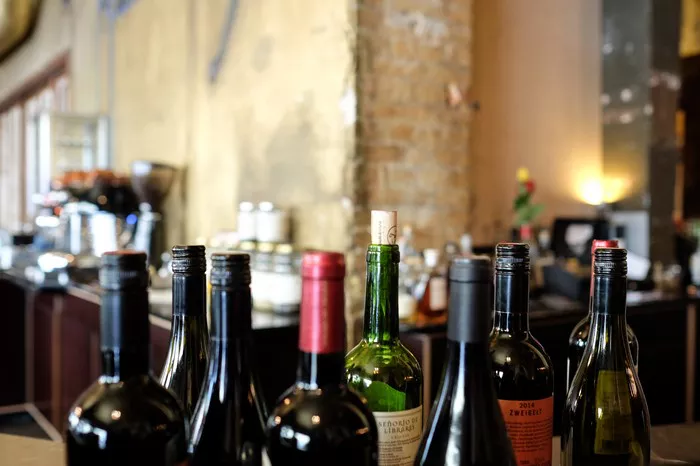Chardonnay wine, known for its versatility and widespread popularity among wine enthusiasts, raises curiosity about its alcohol content. Understanding the alcohol levels in Chardonnay involves exploring various factors, including winemaking techniques, regional influences, and the inherent characteristics of the grape itself. From light and crisp to rich and oaky, the alcohol content in Chardonnay wines can vary significantly, offering a diverse spectrum of flavors and styles to discerning consumers.
Chardonnay Wine: An Overview
To comprehend how much alcohol is in Chardonnay wine, it’s crucial to delve into its origins and the grape’s inherent nature. Chardonnay, a green-skinned grape variety originating from the Burgundy region of France, has gained global recognition for its adaptability to various winemaking styles and climates. This adaptability allows winemakers to craft an array of Chardonnay wines with different flavor profiles, aromas, and, notably, alcohol contents.
Factors Influencing Alcohol Content
The alcohol content in Chardonnay wine is influenced by several key factors. One primary determinant is the ripeness level of the grapes at harvest. Grapes harvested at higher sugar levels typically yield wines with increased alcohol content. As Chardonnay is a relatively neutral grape, winemakers have the flexibility to influence alcohol levels through factors like harvesting time, fermentation techniques, and the use of additives.
Harvesting and Ripeness
The timing of grape harvest plays a pivotal role in the alcohol content of Chardonnay wine. Winemakers choose the harvest time based on the desired style of the wine they intend to produce. Grapes harvested earlier when sugar levels are lower may result in a Chardonnay with lower alcohol content and higher acidity, offering a crisper and lighter profile. Conversely, grapes left to ripen longer on the vine accumulate more sugar, potentially yielding a wine with higher alcohol content and a riper, fuller-bodied taste.
Fermentation Process
The fermentation process significantly affects the alcohol levels in Chardonnay wine. Winemakers can opt for different fermentation techniques, such as stainless steel tanks or oak barrels, each influencing the final alcohol content and flavor profile. Fermenting Chardonnay in stainless steel tanks tends to preserve the grape’s natural acidity and produce wines with a lower alcohol content. Conversely, fermenting in oak barrels can impart additional flavors and textures while potentially contributing to higher alcohol levels due to slight evaporation and concentration during aging.
Yeast and Fermentation Temperature
The choice of yeast strains and fermentation temperature also contributes to the alcohol content in Chardonnay wines. Certain yeast strains can tolerate higher sugar levels, converting more sugar into alcohol during fermentation and resulting in wines with elevated alcohol content. Additionally, controlling fermentation temperatures can impact the yeast’s activity, affecting the speed and completeness of sugar conversion into alcohol, ultimately influencing the wine’s alcoholic strength.
Regional Influences on Alcohol Levels
The terroir, encompassing factors like climate, soil, and vineyard location, significantly impacts Chardonnay grapes and subsequently influences the wine’s alcohol content. Cool climate regions, such as Chablis in France or parts of Sonoma County in California, often produce Chardonnay wines with higher acidity and lower alcohol content due to slower grape ripening. Conversely, warmer regions like Australia’s Margaret River or California’s Napa Valley tend to yield riper grapes with increased sugar levels, resulting in wines with higher alcohol content and fuller body.
Alcohol Content Variance in Chardonnay
The alcohol by volume (ABV) in Chardonnay wine typically ranges between 11% and 14.5%. However, this range is not fixed, and wines may fall slightly below or exceed this spectrum based on various factors previously mentioned. Some Chardonnay wines labeled as “light” or “crisp” might have ABV levels around 11% to 12%, offering a refreshing and easy-drinking experience. On the other hand, wines labeled as “full-bodied” or “oaked” might exhibit ABV levels closer to the higher end, around 13.5% to 14.5%, showcasing a richer and more complex flavor profile.
See Also: How Long Does Chardonnay Last After Opening?
Labeling and Regulation
Wine labeling regulations in different regions mandate the disclosure of alcohol content on the bottle. This information enables consumers to make informed choices based on their preferences and tolerance levels. In the United States, for instance, the Alcohol and Tobacco Tax and Trade Bureau (TTB) regulates wine labeling and requires accurate ABV representation on labels, ensuring transparency for consumers.
Impacts of Alcohol Levels on Chardonnay Wine Experience
The alcohol content in Chardonnay wine influences various aspects of the drinking experience, affecting taste, body, and overall perception. Wines with lower alcohol content may exhibit more pronounced acidity, lighter body, and delicate flavors, making them suitable for casual sipping or pairing with lighter meals. Conversely, higher alcohol wines often showcase riper fruit flavors, fuller body, and a more substantial mouthfeel, pairing well with heartier dishes or serving as standalone sipping wines.
Conclusion
In conclusion, determining the alcohol content in Chardonnay wine involves a multifaceted interplay of factors, from grape ripeness and fermentation techniques to regional influences and winemaking styles. The versatility of Chardonnay allows for a diverse range of wines, each with its unique alcohol content, flavor profile, and characteristics. Whether one prefers a light and refreshing Chardonnay or a bold, full-bodied expression, understanding the factors shaping alcohol levels enhances appreciation for this widely loved varietal. Next time you uncork a bottle of Chardonnay, consider the intricate balance between alcohol content and the myriad influences contributing to its delightful nuances.


